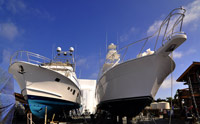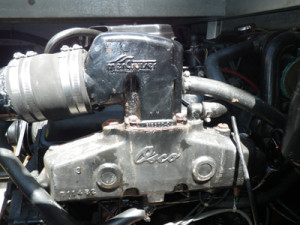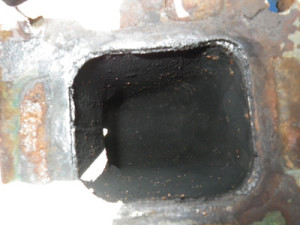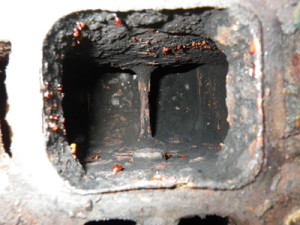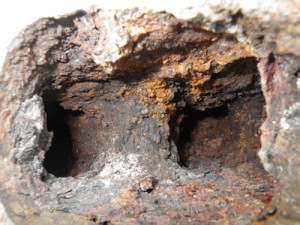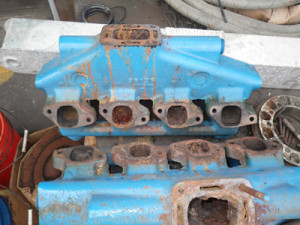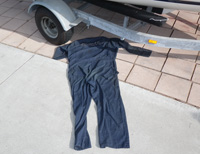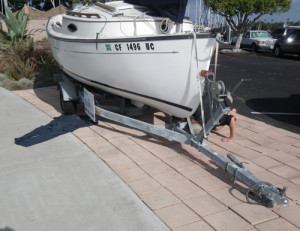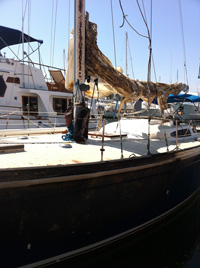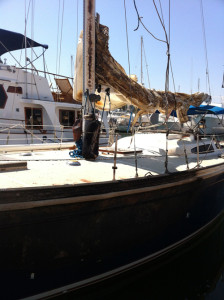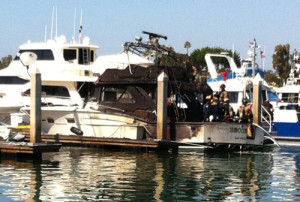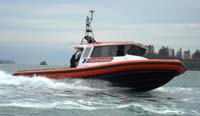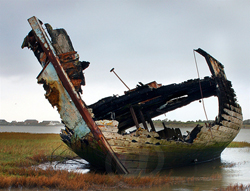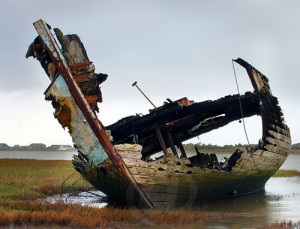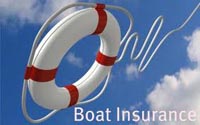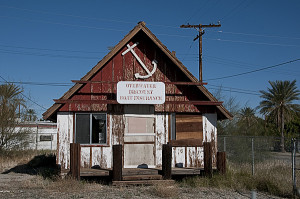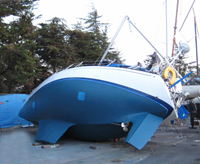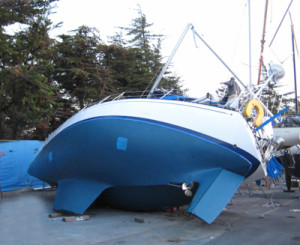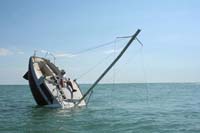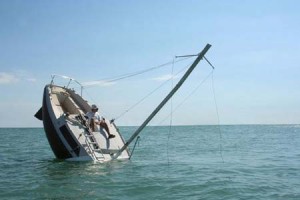The best way to learn how to get out of trouble is to get out of trouble. The problem is that you have to get into trouble first. Through the insurance claims we have assisted with, we have developed a sense of the initial responses that are effective versus those that are not. Time is often short in these situations and the first action is critical.
In order of importance, we need to preserve life, health and property. Our first response is governed by the type of emergency, our vessel’s location, resources and our personal knowledge. It is great if you are a doctor when a passenger has a stroke and it is great if you are a mechanic when your engine springs a leak. If you are not so fortunate, then use your brain, quickly and calmly assess the situation, decide what to do and delegate the jobs as possible.
Some immediate actions are common to most emergencies. Announce your emergency to the available trained assistance professionals as quickly as possible. The Coast Guard, Fire Department, Life Guards and even professional towing companies can be invaluable. Use the VHF versus your cell phone. Ideally, the most capable person should address the emergency while a capable alternate communicates the nature of the emergency to potential first responders. Several types of maritime emergencies will eventually lead to the inability to communicate a distress call, so get it out quickly.
Your location and the natural resources available should be considered. If your transmission control fails and you are stuck in forward gear, operate towards the open water not towards a crowded mooring. If your boat is sinking, stay close to the soft sand beach versus the rock jetty. If a passenger is stricken with a serious sudden injury or illness, see if any medical assistance is available in your immediate vicinity. A doctor on a boat next door is more valuable than the one at the emergency room thirty minutes away. Send others in both directions down the dock, use all your personnel.
Your options depend on where your vessel is located, your slip, the bay, near coastal or offshore. If the transmission is stuck in gear, head away from the mooring areas, if you’re taking on water, head toward the soft sand beach and away from the rock jetty. Planning for emergencies should include safety and first aid components suitable for the intended area of usage and for the passengers, consider an oxygen bottle, EPIRB or life raft.
A fire aboard a boat demands a quick and efficient response. No matter how big the ship, you can’t run away from the fire. Fires aboard a boat are usually discovered by smoke. Make sure the smoke is being generated by an actual flame before deciding what action is required. Many boat “fires” are actually smoke escaping from the engine’s exhaust system. These “fires” can be stopped by turning off the engine. Discharging a fire extinguisher into the engine room, or the saloon, will not stop the smoke and increases the mess.
Before entering the engine room to determine the source, check the hatch for heat. Once the location of the fire is determined, decide if it can be safely extinguished and if so extinguish the fire by any means possible. Discharge all of your fire extinguishers at the base of the flame, delegate others to fill buckets of water (we know you have plenty of that), shut off power and fuel sources and don’t inhale the smoke. Discharge fixed extinguishers remotely if possible; use remote pulls for fixed systems or holes designed for discharging extinguishers is smaller engine spaces (many sailboats have these).
To avoid smoke inhalation stay low in any cabin filling with smoke.
[hint – maintain firefighting equipment, consider smoke alarms and escape hoods]
A quote from my favorite mentor is “Nothing, absolutely nothing good ever comes from water in the bilge”. At the first sign of water intrusion, every effort should be made to determine the source. If the water is warm, it is coming from the engine. Cold water is from the ocean and it can be tricky to find the source if it is already submerged. Check the obvious places, shaft seals, through hulls and sea water hoses. Isolating the area of the source reduces the possibilities. The next most important action is to begin the dewatering process. Again, a second capable person can attend to this action, after broadcasting the distress. Activate all bilge pumps in the manual/constant mode.
[hint – maintain the bilge pumps, shaft seals and seawater systems and install a high water alarm]
Occasionally, boats get in collisions; even boats not involved in a sailing race occasionally collide. As always, check for personal injuries. Immediately after the collision, start the engine, douse the sails (a little powerboat vs. sailboat joke), and have a competent operator take the helm. Triage the injury, is there water coming in, is an emergency patch or repair required? If the vessel is flooding quickly and it is clear no emergency patch or pumping action will save it, consider beaching the vessel, preferably on soft sand. Give the mast temporary support if the impact affected the shrouds or stays. Call for a tow if safety is questionable.
[hint – post a proper lookout at all times, use radar in limited visibility. avoid contact even if you have the right of way – unless you are making your living racing]
Striking a submerged object or running aground is an avoidable emergency. Once it happens, check for water and access the damage before deciding how to continue. Sailboats check the aft end of the keel box (keels hinge up and aft upon impact), power boats check propeller shafts/seals, struts’ connections and rudder ports. Follow the lead of the professional mariners, know your waters. Did you know that there is a charted submerged jetty on the east side of the main entrance into San Diego bay, near Ballast Point (de-gauzing station)? There is probably a similar charted hazard in your most common boating area. After the initial damage make sure no further damage is done by continuing to operate a damaged outdrive, transmission or engine. If in doubt, call for a tow.
[hint – read your chart]
Losing your engine/propulsion capabilities or electricity can lead to a nautical emergency. Sophisticated fire fighting systems on most yachts include an over ride. This allows the system to be disabled while the vessel enters a dangerous inlet. The thought is “let the fire burn” for the few minutes that it takes to transit safely past the dangerous rocks, especially in a heavy seaway. If your propulsion system does fail, assess your situation, ready your anchor, have crew members grab fenders (versus fending off with body parts) and if possible raise your sails. If offshore, prevent the vessel from reaching the waves. Deploy an anchor, and make sure it sets.
Losing the electrical power is often more frightening as the options for calling for help is reduced. First response to any loss of electrical power is to assure that no associated fire hazard exists.
Electrical and mechanical malfunctions are often repairable. Be calm, thoroughly assess the situation and use all available resources, (onboard and at the other end of your VHF or mobile phone) and you can likely keep boating that day. Diesel engines don’t lose compression or air quickly, it is a fuel problem. All the batteries don’t fail simultaneously and there are often various charging systems. Do you have a battery parallel device?
[hint – learn basic mechanical and electrical concepts and maintenance procedures, perform active preventative maintenance]
From an insurance claim standpoint most policies require the owner/operator to mitigate damage after any “event”. In other words, stop the damage from getting worse. This may be compensable, even if the claim is denied. In any event, prevention of further damage makes $ense, so wash off the salt water, air out the smoke and clean up that fire extinguisher you discharged into the saloon.
It is accepted in the maritime community that practicing for emergencies helps deals with real ones. Hopefully, this article has stimulated some thought about your emergency plans. If you have not done one of the following items in some time perhaps you should…
• Test, service or replace your alarms
• Perform a man overboard drill
• Test and prove your bilge pumps
• Replace your flares
• Service or replace your fire extinguishers
• Replace or update your first aid kit
• Buy a book about treating medical emergencies at sea
This article was edited on February 29, 2016.
![3170[1]](https://themarinesurveyors.com/wp-content/uploads/2016/03/31701.jpg) The independence of appraisers is a minor but important component for any industry. Accurate appraisals are a critical piece to any “free market” and that includes the market place for vessels. An accurate and independent appraisal is additional ballast to keep a boat deal stable, a small contribution to the righting moment. They help all sides, without prejudice. Appraiser independence is quite simply a financial and business application of THE GOLDEN RULE.
The independence of appraisers is a minor but important component for any industry. Accurate appraisals are a critical piece to any “free market” and that includes the market place for vessels. An accurate and independent appraisal is additional ballast to keep a boat deal stable, a small contribution to the righting moment. They help all sides, without prejudice. Appraiser independence is quite simply a financial and business application of THE GOLDEN RULE.![images[5]](https://themarinesurveyors.com/wp-content/uploads/2016/03/images5.png) The appraiser/marine surveyor’s client deserves an explanation of how the data resulted in the appraised value. While the marine survey or appraisal report is performed on behalf of a client, all parties to the transaction should have confidence in the independence of the appraiser. Without independence, trust is lost and without trust the value of the appraisal is… well you know what it is. You don’t need an appraiser for that.
The appraiser/marine surveyor’s client deserves an explanation of how the data resulted in the appraised value. While the marine survey or appraisal report is performed on behalf of a client, all parties to the transaction should have confidence in the independence of the appraiser. Without independence, trust is lost and without trust the value of the appraisal is… well you know what it is. You don’t need an appraiser for that.
